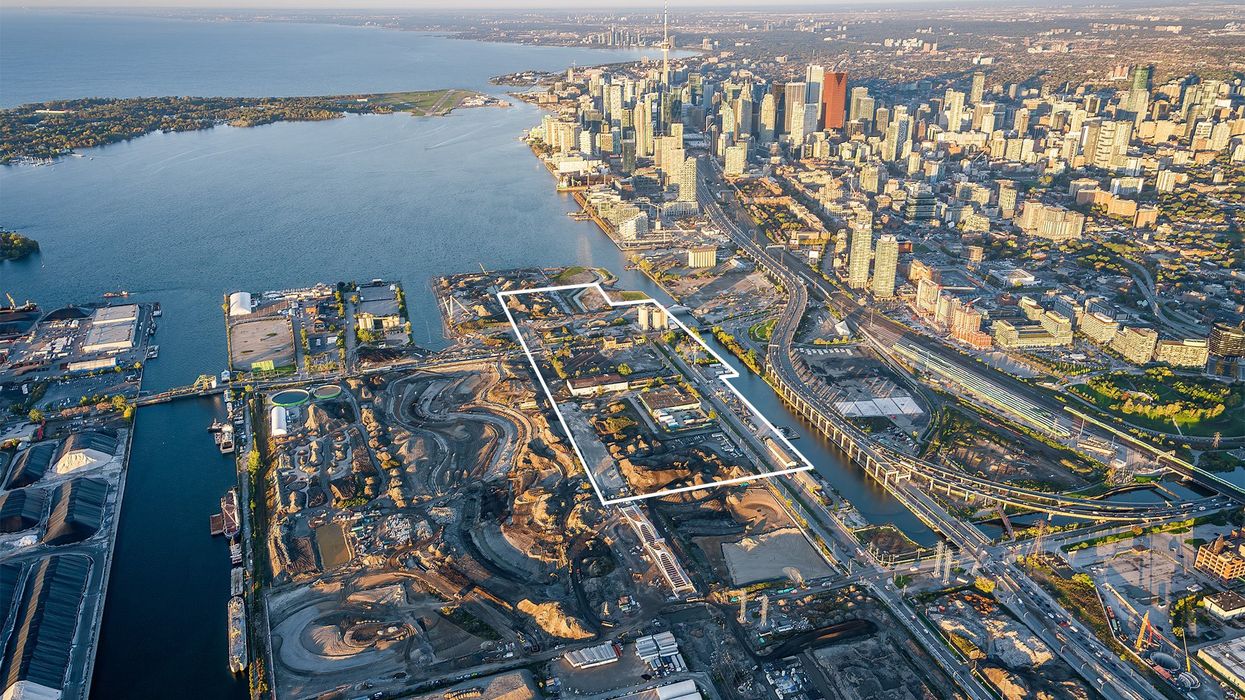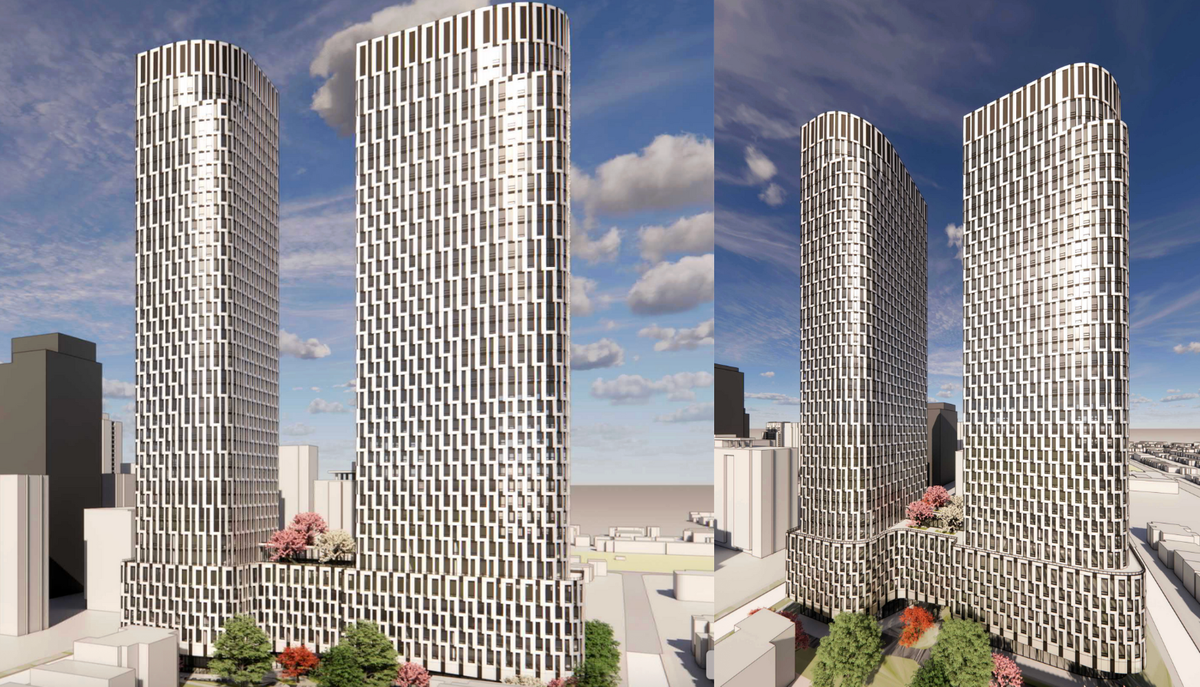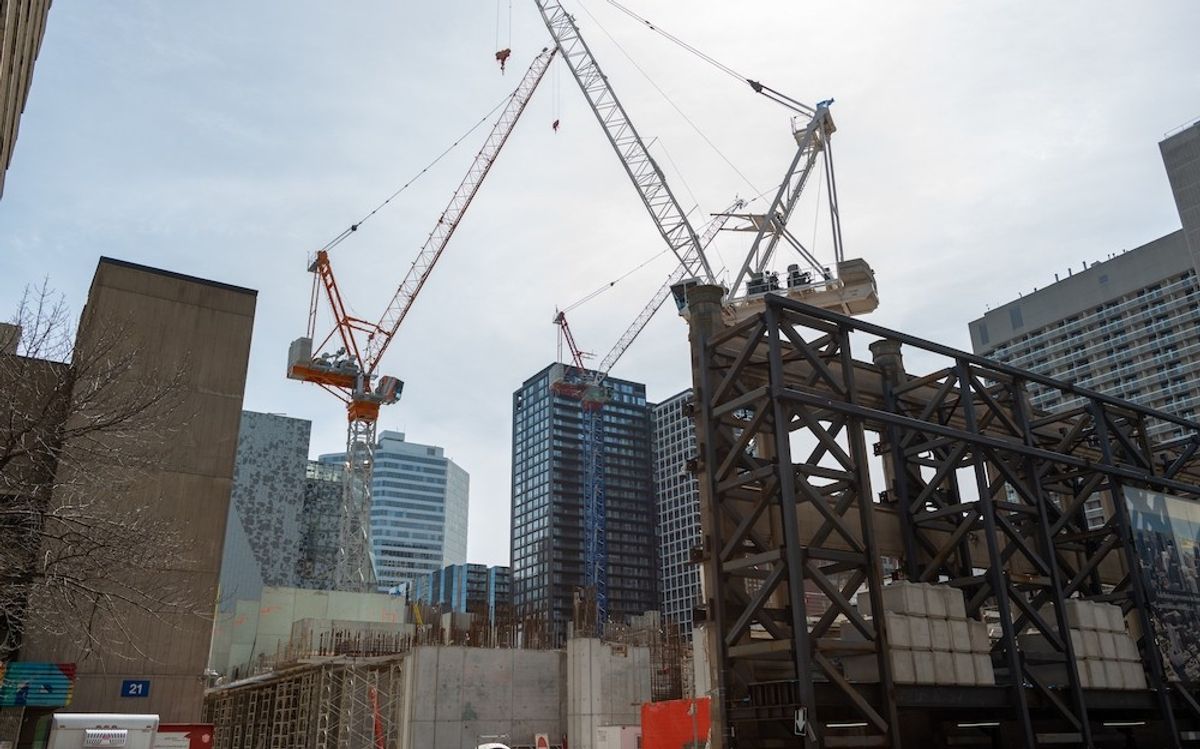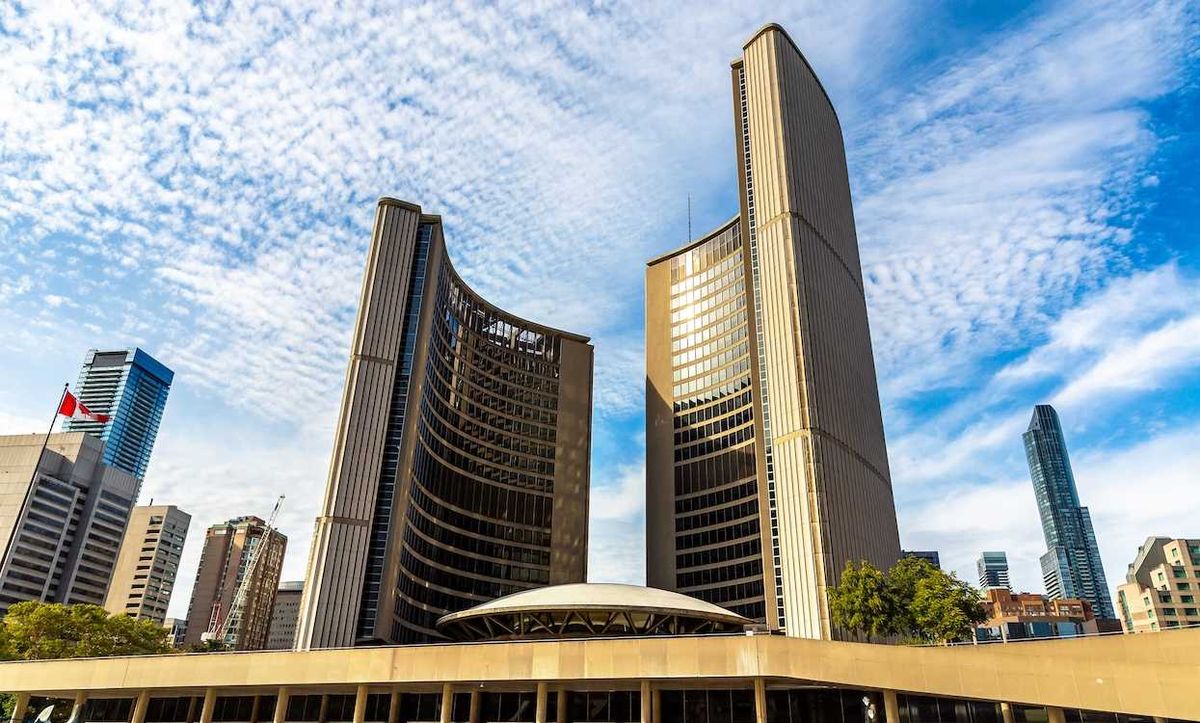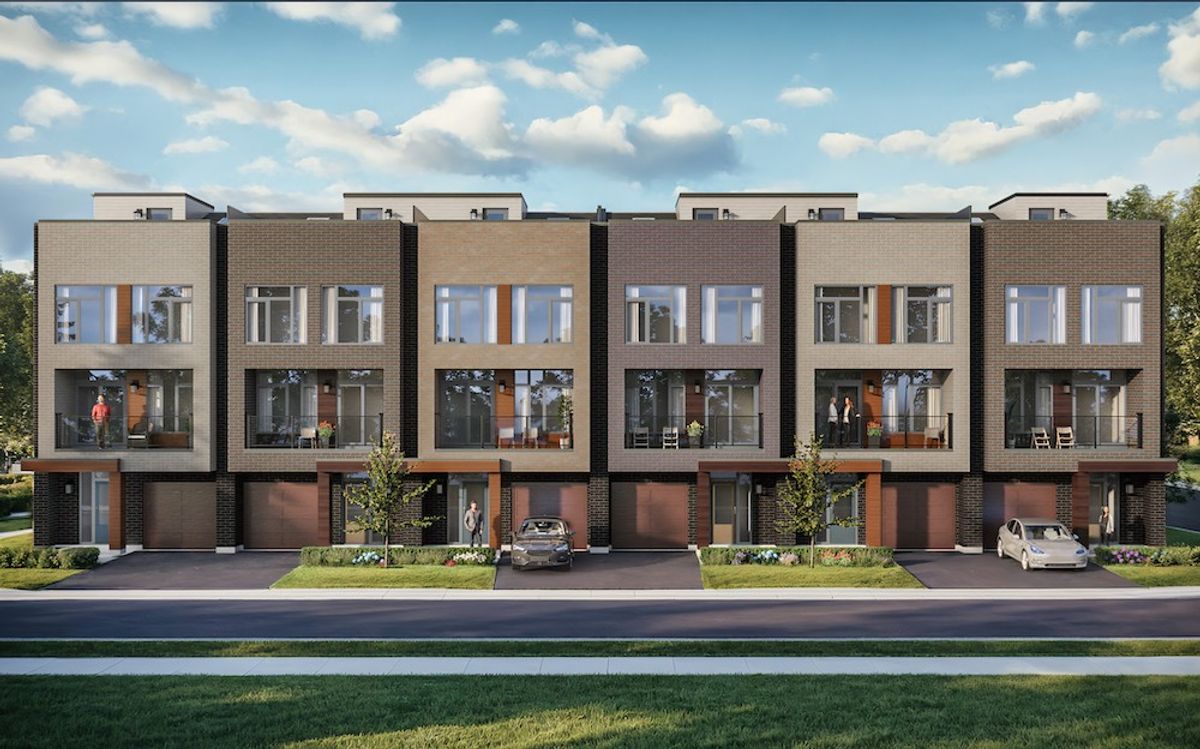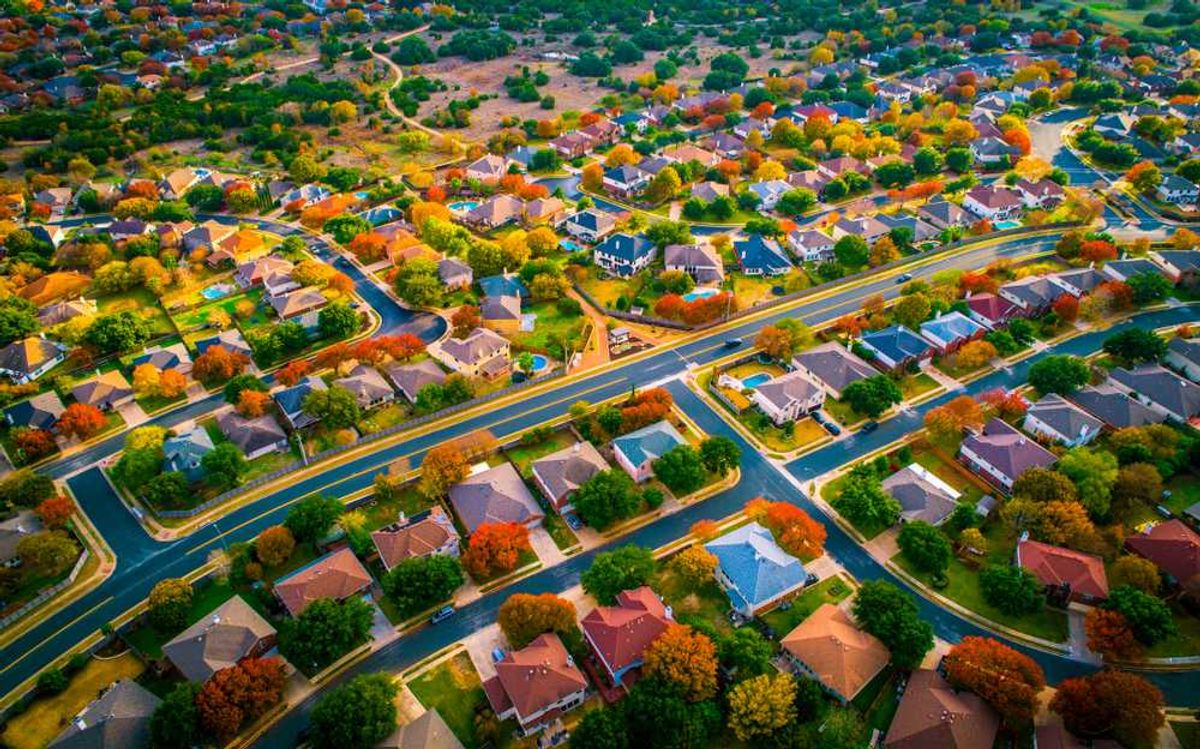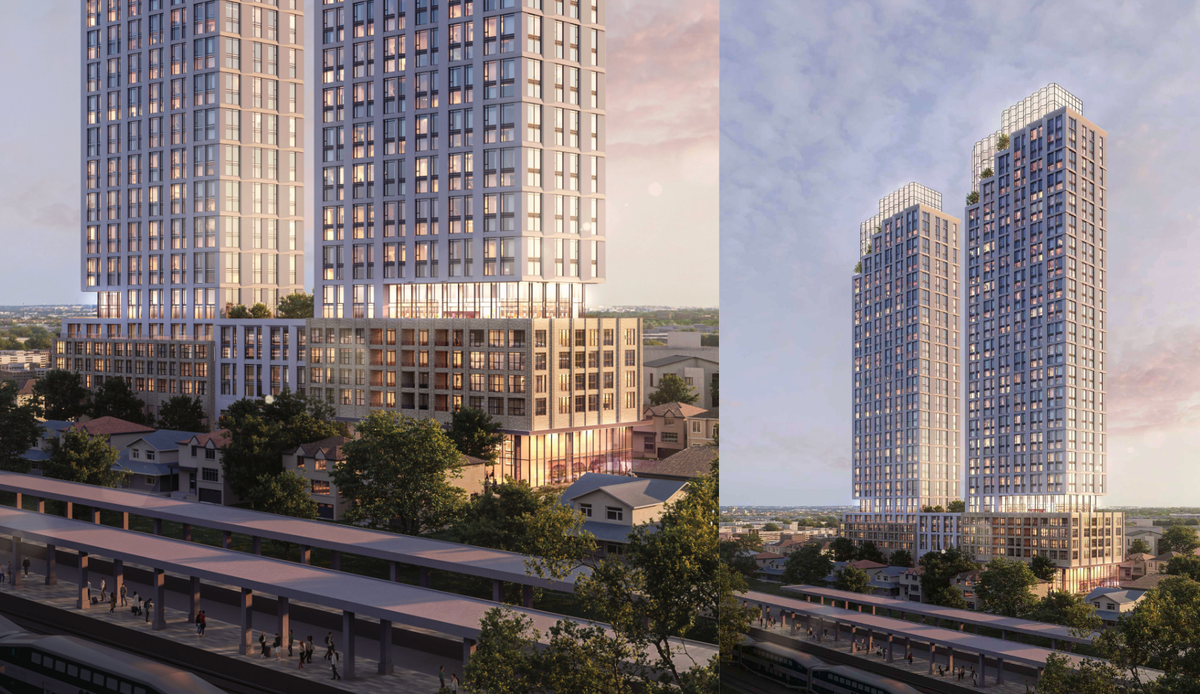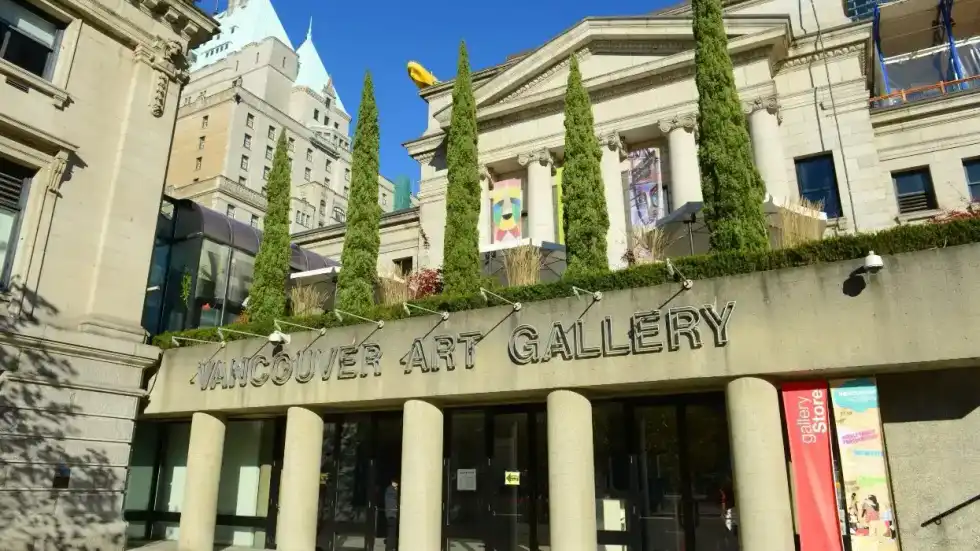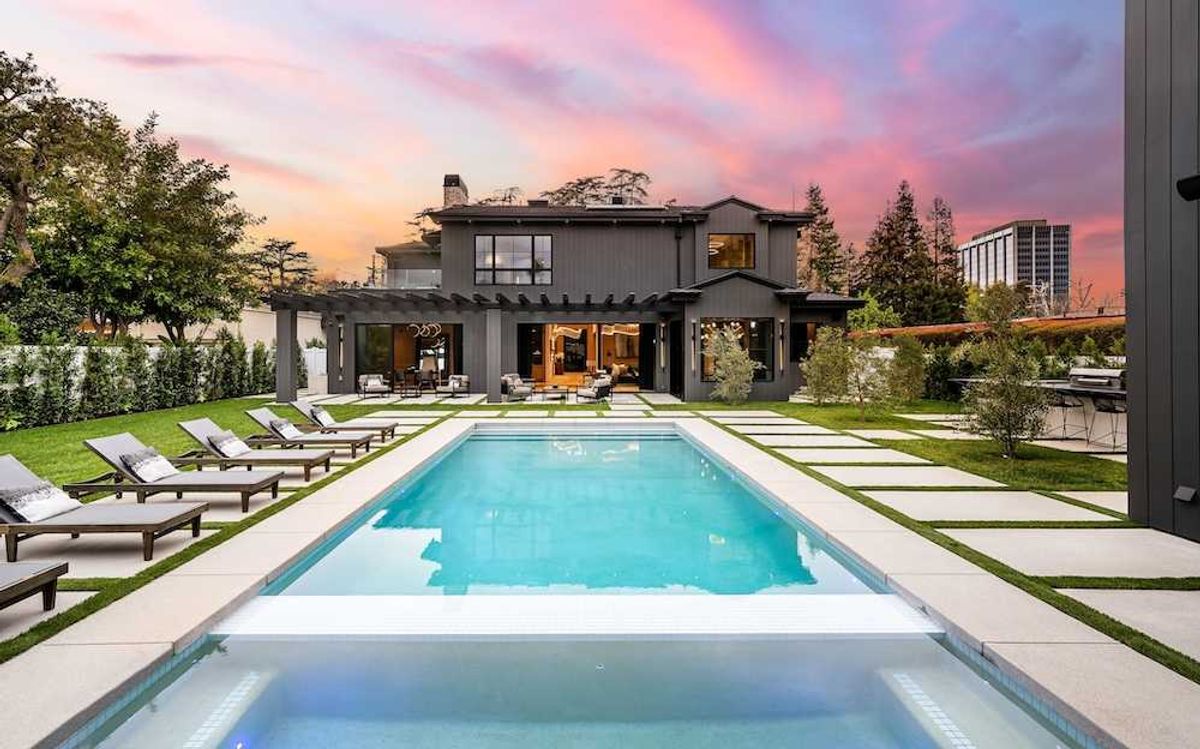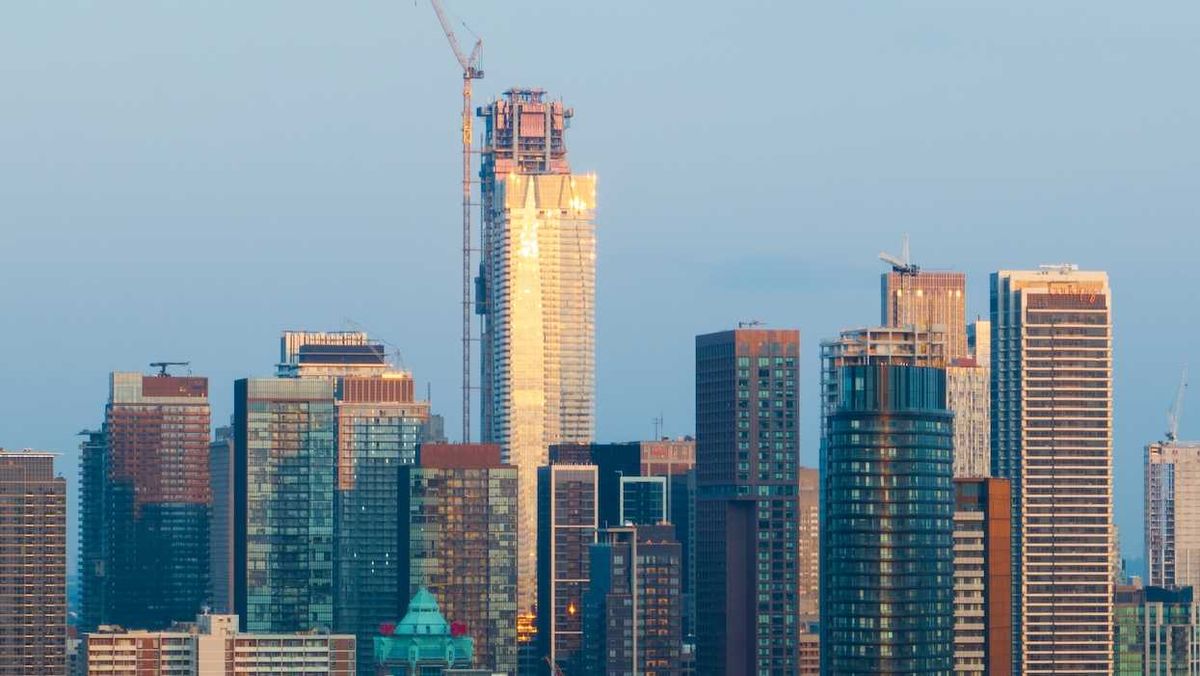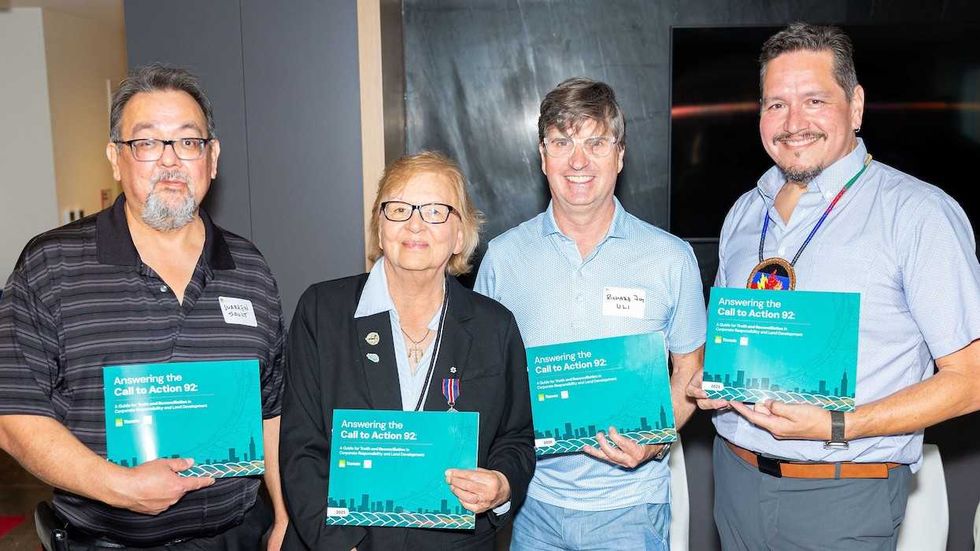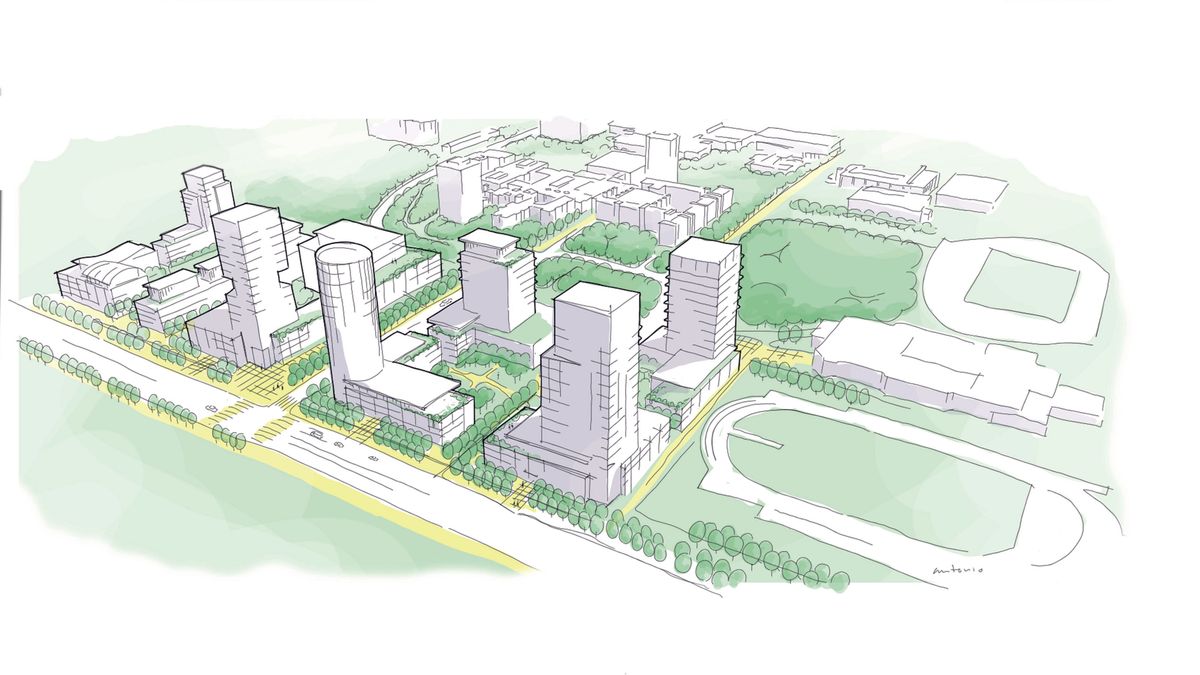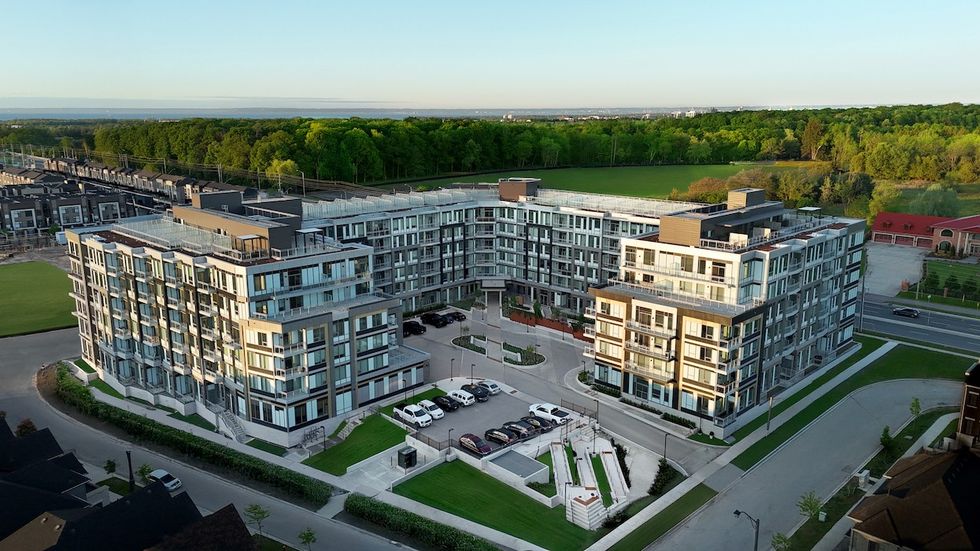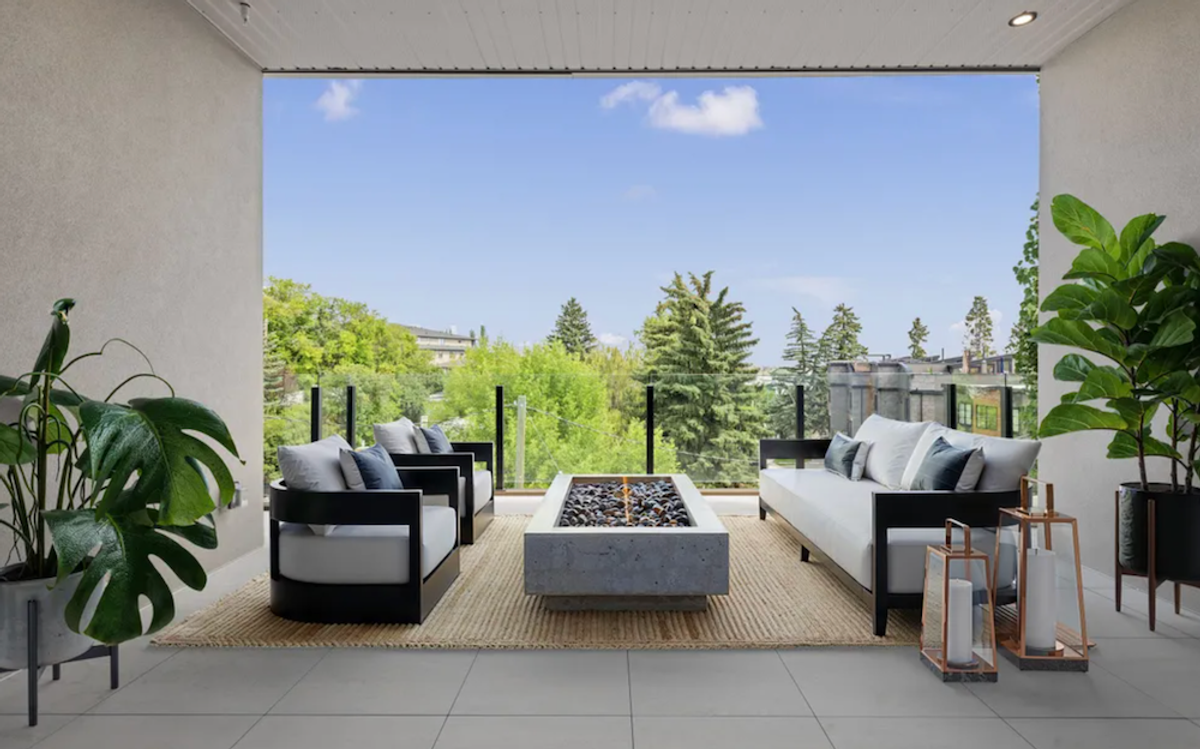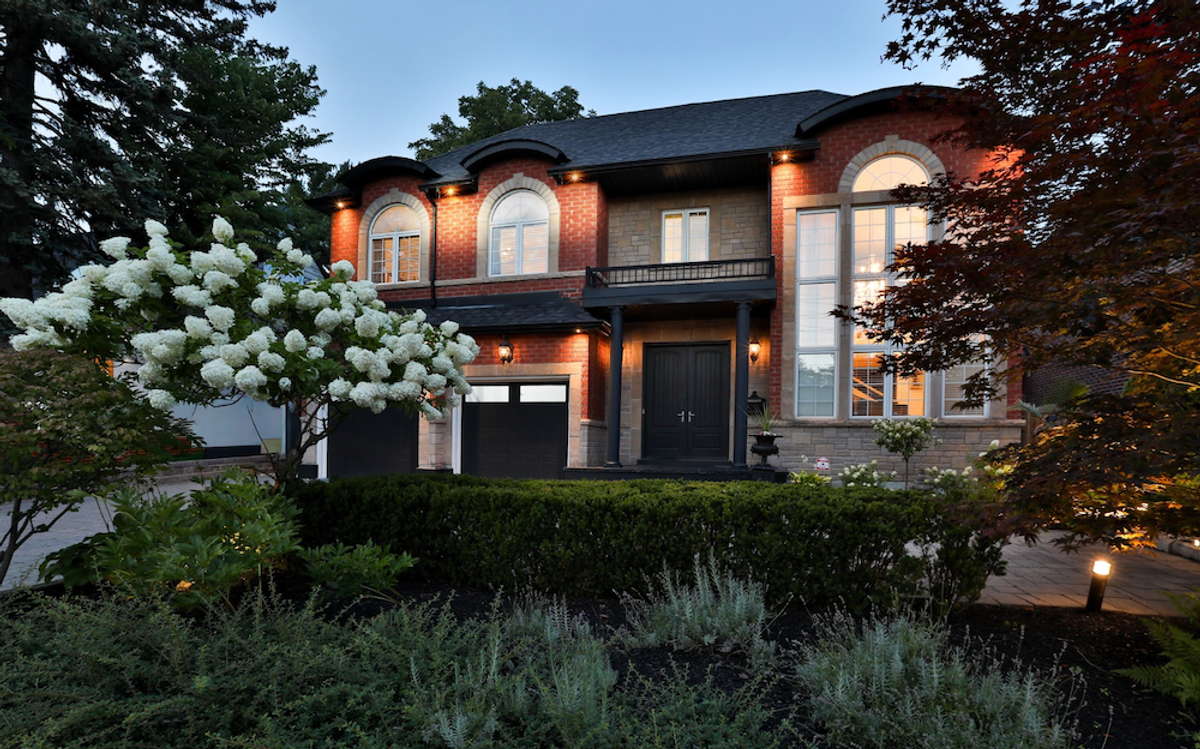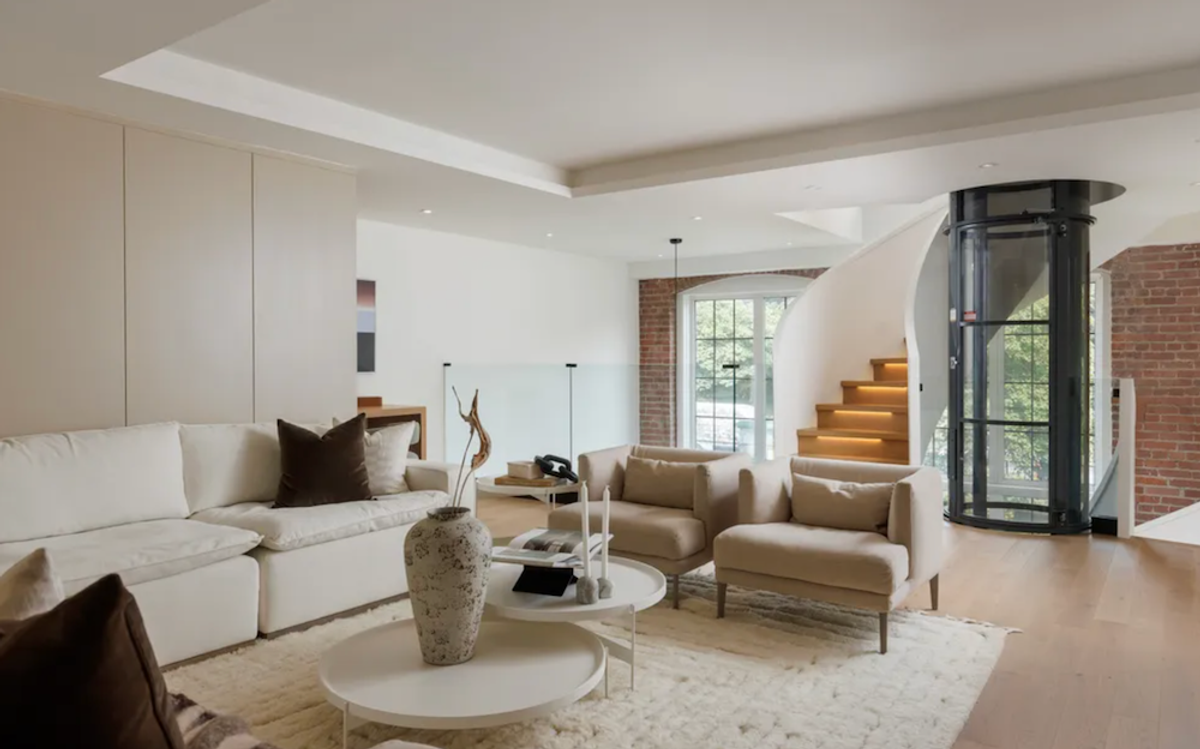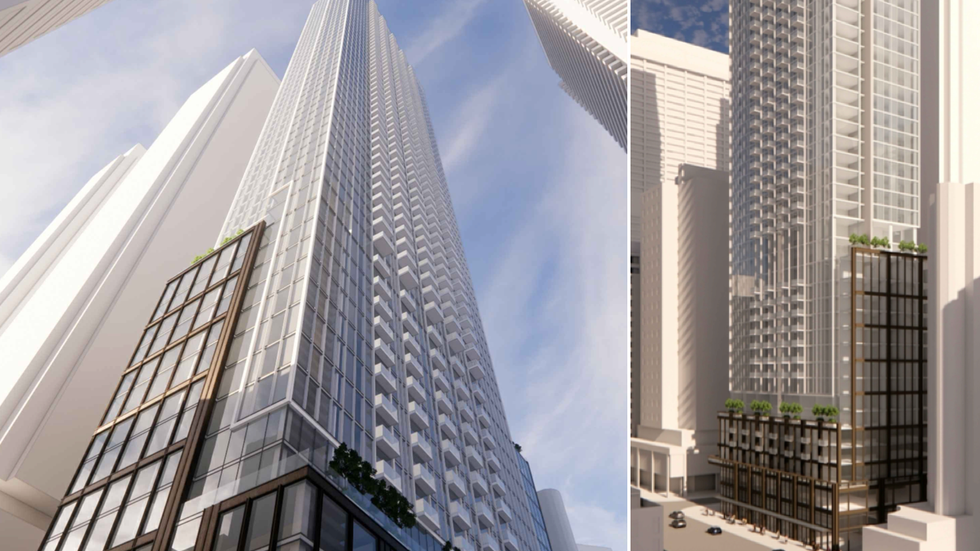This summer, Danish nature-based design studio SLA and leading civil engineering company GHD will begin planning the infrastructure and streetscape design for Ookwemin Minising (formerly known as Villiers Island) after winning a competitive bidding process with Waterfront Toronto.
Their task? Designing a new urban environment for the 48 acres of developable land located on Ookwemin Minising, while honouring cultural memory and the legacy of the Don River, as well as delivering on "resilient infrastructure" and "deep ecological integration."
The work of SLA and GHD's partnership, dubbed "Niwiijiganaa Gikendaasowin" (We Braid Knowledge), will set the stage for the continued development of the island, which is expected to begin welcoming the first of over 15,000 residents in 2031.
While SLA and GHD will be tackling the developable land on Ookwemin Minising, another key element of the islands' revitalization is the creation of Biidaasige Park and the restoration of surrounding wetlands, which together total 50 acres of parkland and green space and surround the to-be-developed land on three sides.
The park and wetlands will be home to a number of attractions accessible to both residents and visitors, including a wetlands walking trail, canoe and kayak launch spots, a play zone that includes a recreation of the Cheltenham Badlands, a children's theatre stage, and not one but two zip lines.
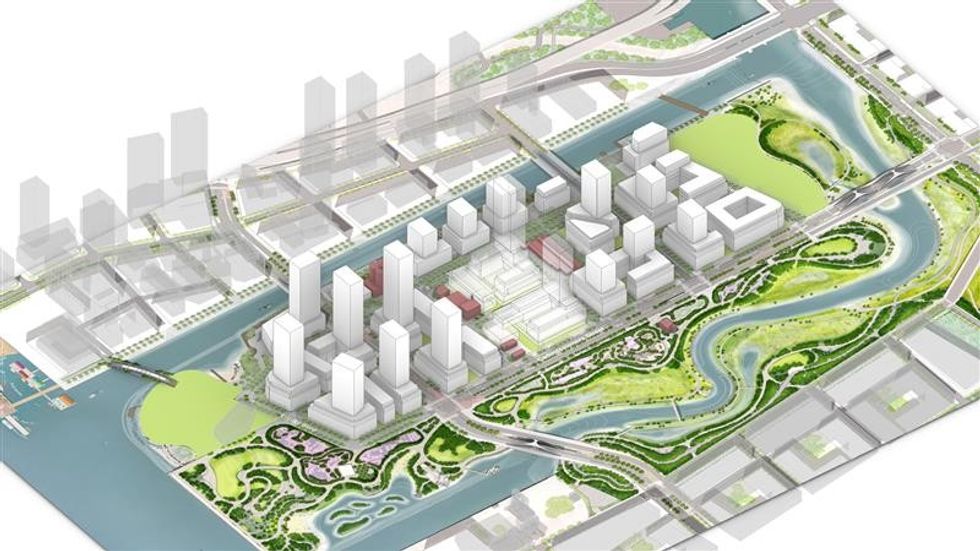
The History of Ookwemin Minising (Villiers Island)
Before the industrial overhaul that defined Villiers Island and the larger Port Lands region for much of the 19th and 20th centuries, marshland, sandy soil, and black cherry trees were the defining features of this unique strip of Toronto's waterfront. And for over 12,000 years, the lands were inhabited by numerous Indigenous groups who lived and thrived near what was then Ashbridges Bay Marsh.
The marsh was filled in the early-20th century to support the growing industrial development in the region, but a century later, those industrial buildings lay vacant and the new 90-degree mouth of the Don River, which had been altered from its natural state to flow into the Keating Channel, was causing serious flooding problems, especially in the Port Lands, South Riverdale, and Leslieville.
Last November, decades of organizing culminated in the successful re-naturalization the mouth of the Don River when a dam was removed that had been holding back the Don from the newly naturalized river valley. The effort was apart of the larger Port Lands Flood Protection Project, Toronto's largest ever infrastructure project, which includes the creation of new public parks, roads, bridges, municipal infrastructure, and earthworks/flood protection projects.
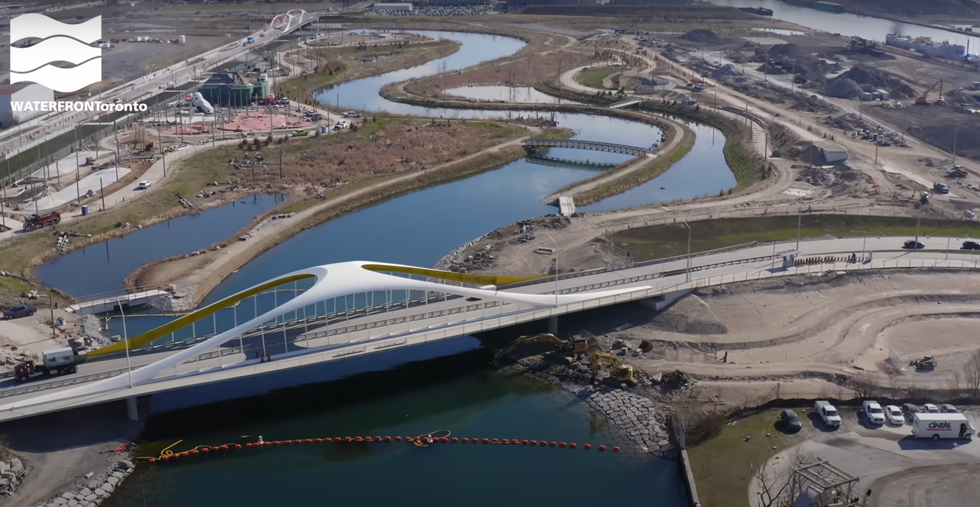
The re-naturalization of the mouth of the Don also means that Villiers Island is now surrounded on all four sides by water, creating a new island. As of November 2024, however, Villiers Island has been renamed to Ookwemin Minising (pronounced Oh-kway-min Min-nih-sing). The name means “place of the black cherry trees” in Anishinaabemowin/Ojibwemowin and was chosen by an Indigenous Advisory Circle convened by the City of Toronto.
Indigenous Placekeeping
For SLA and GHD, one major element of the infrastructure design for the Ookwemin Minising community is to honour Indigenous placekeeping — something prioritized right off the bat, with the renaming of the island last November.
Beyond that, SLA and GHD are teaming up with Trophic Design, an Indigenous-owned landscape architecture firm based in southern Ontario that has worked with SLA on numerous projects and will be sharing their indigenous knowledge and perspectives throughout the design process.
"[Indigenous placekeeping] is a legacy that we bring from other projects, and it's the only right thing to do," Senior Partner and Design Principal at SLA Rasmus Astrup tells STOREYS. "I don't think it's a guiding principle, I think it is the principle."
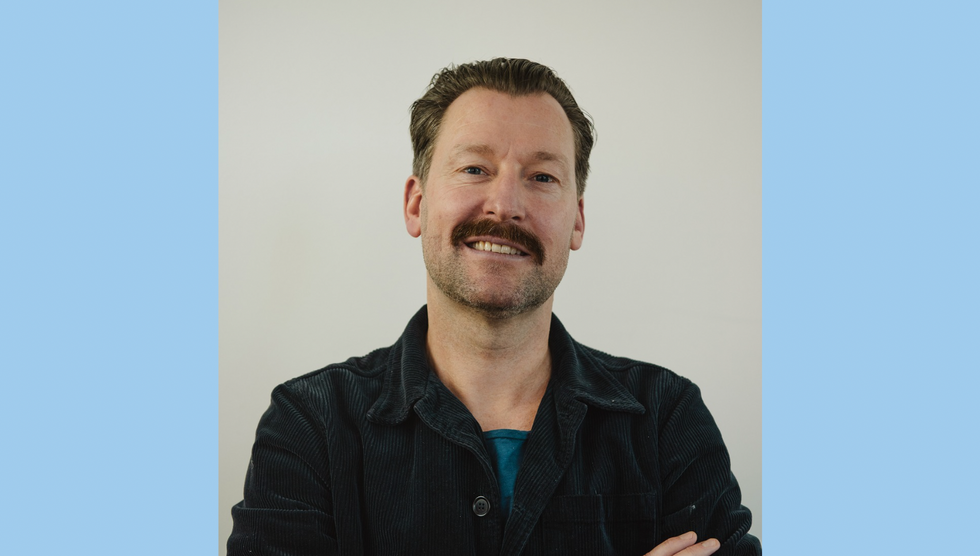
Drawing upon Indigenous perspectives, the team says their work will honour past inhabitants of the island, while also considering future inhabitants through sustainable designs.
"You are at the centre point between seven generations before you and after you," says Astrup. "You are in that moment of time where you learn from your ancestors and take responsibility for the generations ahead of you, and that's a different way of designing than most cities are designed."
A Model for Climate-Adaptive Urbanism
This forward-looking approach is embodied in the team's mandate to deliver sustainable infrastructure that operates in harmony with the existing natural environment.
For example, an important part of the island's redevelopment will include intelligent rainwater management systems to harness and sustainably utilize the excess rainfall that previously caused flooding. Other urban challenges to be tackled include mitigating heat and social disconnection.
The rainwater systems are amongst the elements the team will be designing this summer, in addition to public spaces, streets, and utilities — all of which will be designed to consider and enhance the island's ecological functions, Principal and Vice-President at GHD, Jason Haelzle, tells STOREYS.
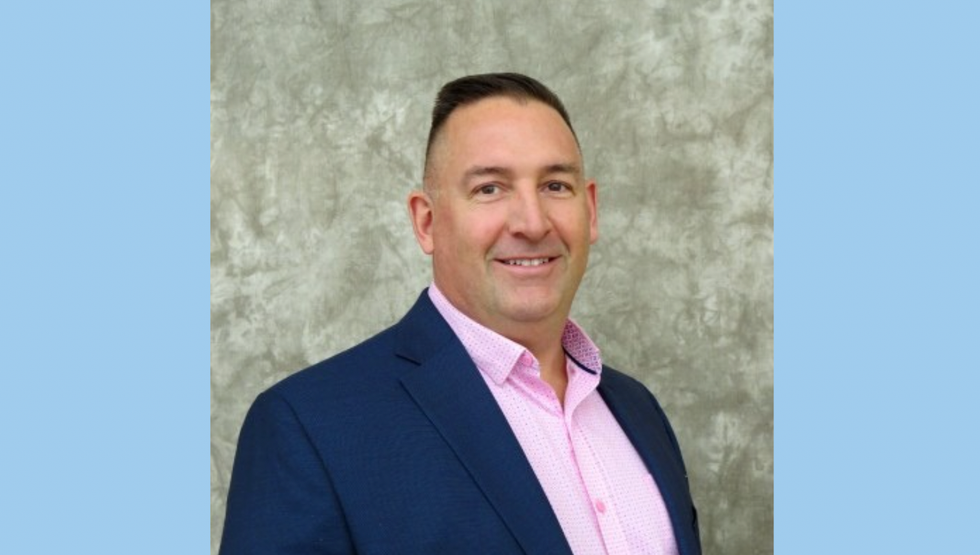
"Every technical system we're designing works hand in hand with that nature-forward and climate-adaptive design, from rainwater infrastructure to utilities that can handle changing demand patterns," he says. "We're not waiting for future technologies. We're harnessing natural processes to address the flooding and other challenges."
'Growing Streets'
The result of this nature-forward design will be lush streetscapes that kill two birds with one stone, providing functional sustainability and creating an attractive environment for residents and visitors to enjoy.
Drawing on Indigenous knowledge and inspiration from cities like Oslo, Copenhagen, and London, SLA and GHD have conceptualized an approach they call 'Growing Streets', where streetscapes on Ookwemin Minising would be designed to increase biodiversity, sequester carbon, and bring nature back into residents' everyday lives. Imagine a forested street, Astrup tells us.
Concept diagram showing GHD & SLA's Growing Streets concept for the future development of Ookwemin Minising/SLA and GHD
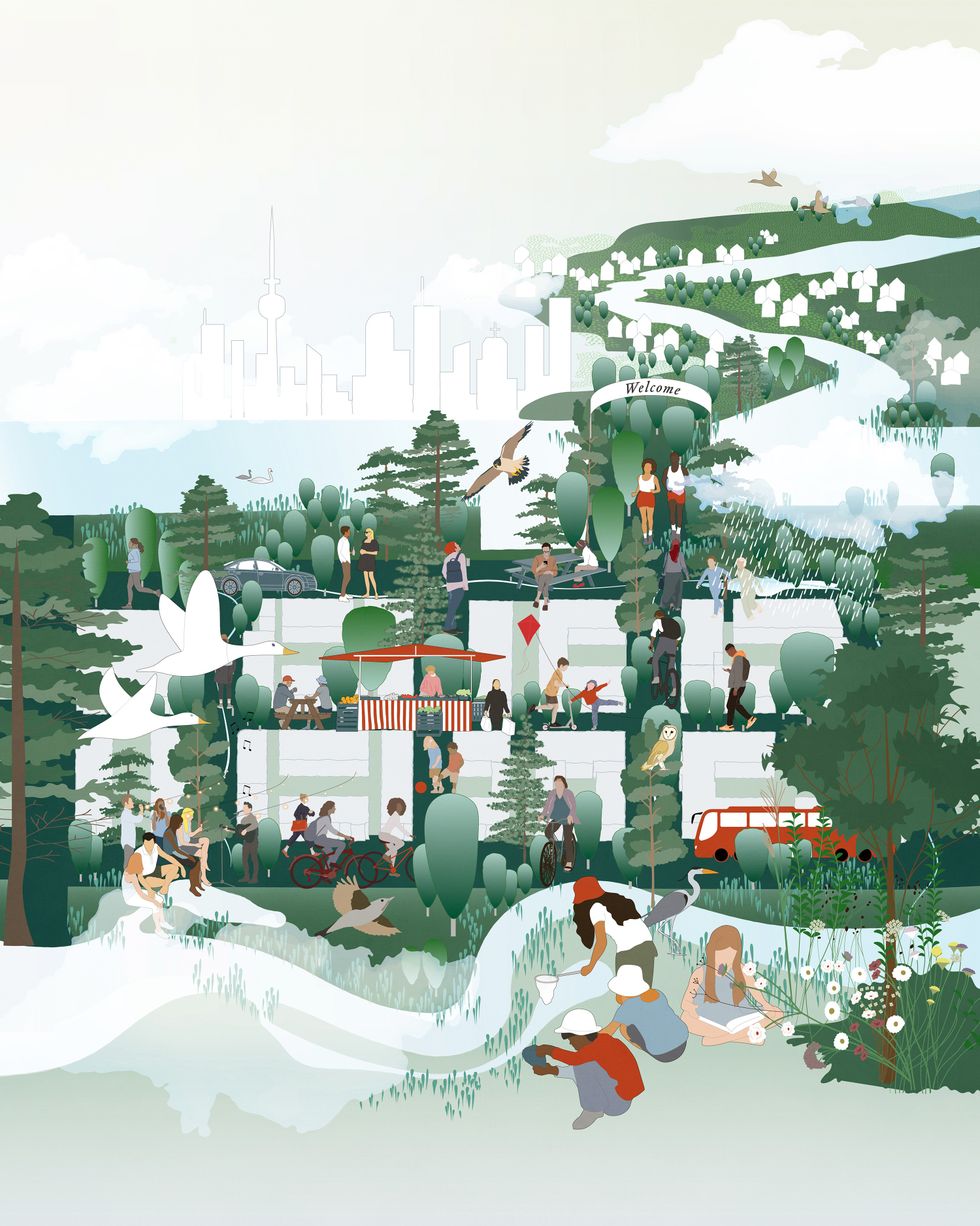

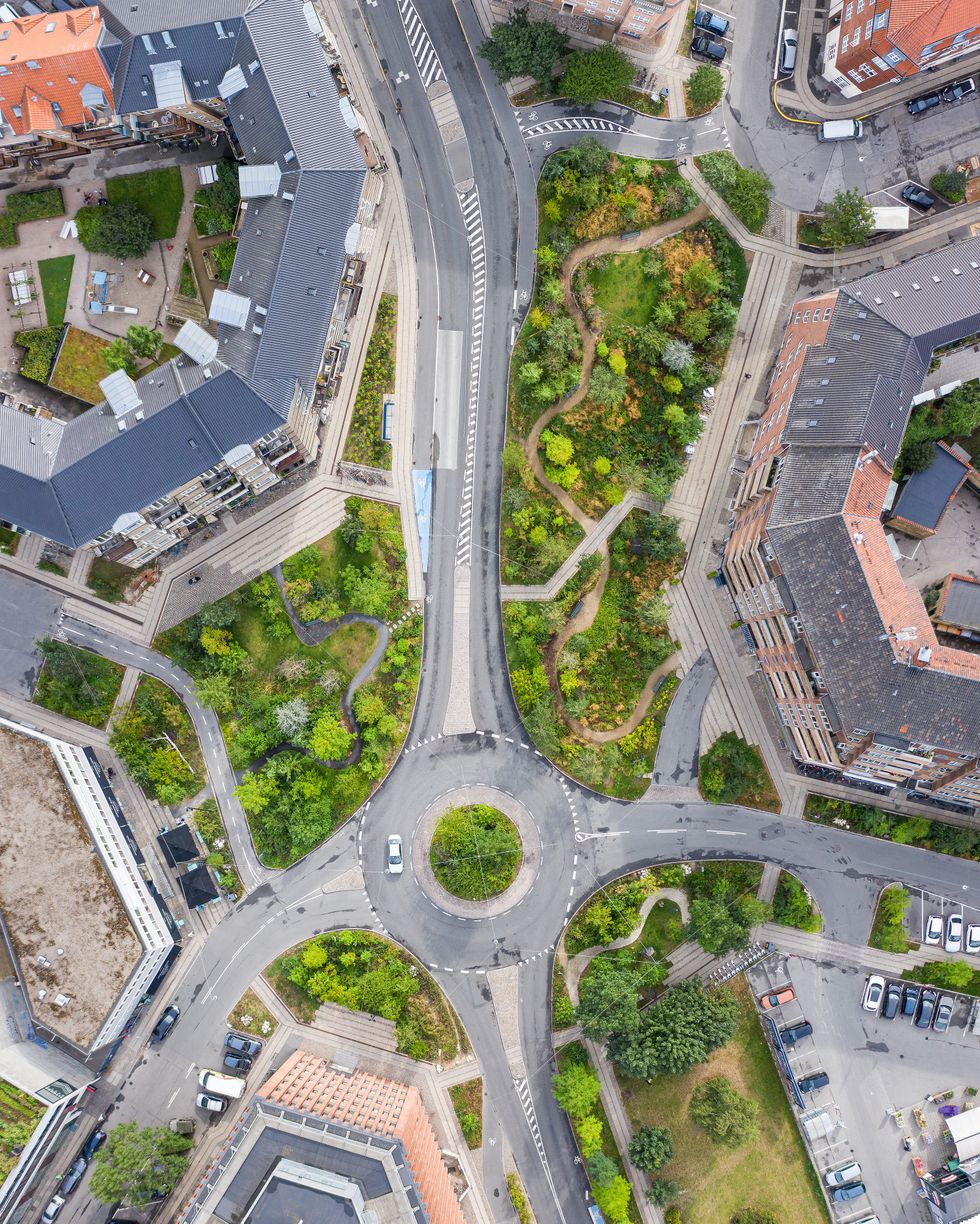
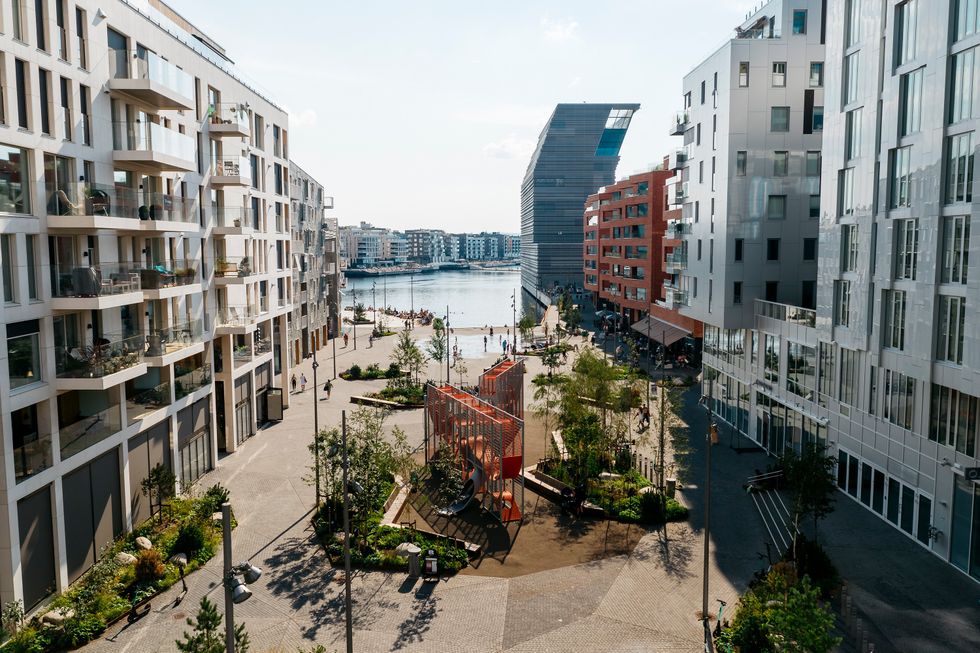
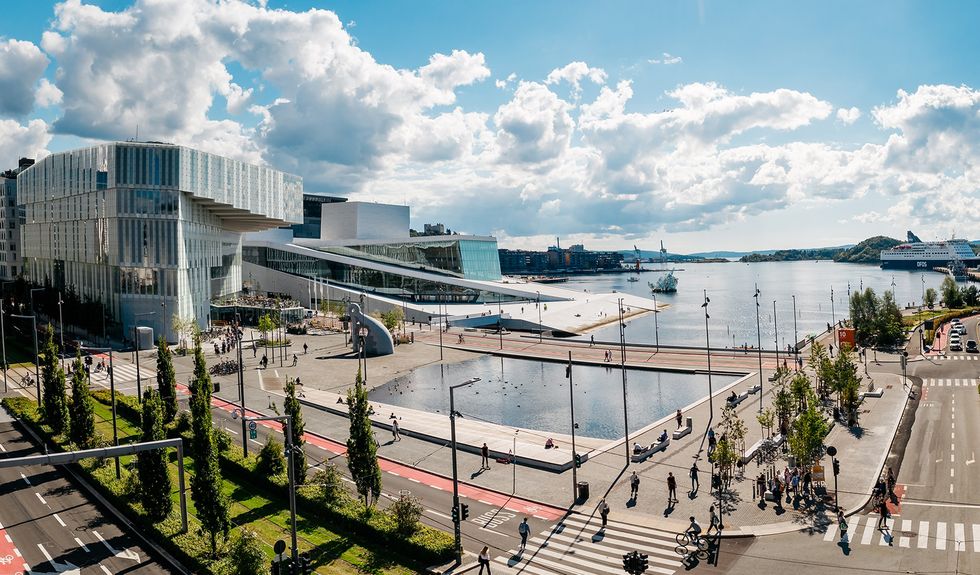
Walking through Ookwemin Minising's 'Growing Streets', you'd find things like native vegetation, tree-lined streets, lush public spaces, and pedestrian and biodiversity corridors.
"The purpose of 'the street' is something more than just bringing a piece of metal with four rubber wheels from A to B," Astrup says. "It's also a place where you gather. It's a place where you actually enjoy your commute. Maybe you hang there, meet your friends. [...] It's a place where you feel a sense of belonging."
Getting It Right
As a chunk of land that has sat largely under-utilized for decades, the revitalization of the former Villiers Island is a long time coming. And, as a large portion of one of North America's largest undeveloped urban brownfield sites, Ookwemin Minising represents a rare opportunity to build a community from scratch, restore value to a prime strip of Toronto's waterfront, and create a new destination within the city.
SLA and GHD have been tasked with laying the ground work for the final product in a unique planning approach where the landscape design is proceeding architectural design, so the team has their work cut out for them.
Still, you'd be hard pressed to find a team with more experience, with SLA and GHD having collaborated on numerous projects in the past and SLA having designed landscapes for projects such as the Downsview Framework Plan, Quayside, and David Crombie Park. The design studio is also 25 years into a similar waterfront brownfield revitalization in Oslo that is recognized as Norway’s largest urban development project.
But expectations remain high, Astrup acknowledges, sharing that he was surprised by the flood of congratulations and feedback, both in Toronto and Denmark, that the team received upon winning the project. The Linkedin post shared by SLA was the most liked post in their history, Danish media outlets covered the news, and competitors in Toronto offered their congratulations.
"I am so humbled, and also aware of the pressure and the need to deliver something very good." says Astrup. "[...] It's really heartwarming to see all of the positive feedback. Now we need to showcase that we deserved it, right?”
- Another Sleek New Bridge Sets Sail for Toronto's Port Lands ›
- Why the St. Lawrence Neighbourhood Can't Solve Today’s Affordability Crisis ›
- New Pair of Mixed-Use Towers to Liven Up Toronto's Port Lands ›
- 49-Storey Condo Tower Proposed Near Sheppard-Yonge Subway ›
- Indigenous Perspectives Shape LANDinc's Ontario Place Vision ›
